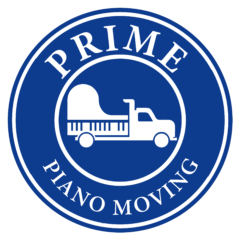If you’re looking for a used piano, it is understandable because a used piano has a high value and can hold their value for over 30 – 50 years.
In this guide, you will learn what things to look for a used piano, and which piano parts are able to be replaced or repaired, type of piano as well as how to test a used piano.
Things to look for when buying a used piano
One of the biggest pros of buying a used piano is how much you are saving instead of buying a new piano. It is possible to repair and restore the majority of a piano so it can look brand new, and if you prefer a different look, you can find a used piano that fits your style.
Conditions overall
Sandboard and Bridge – Look for signs of warping in the soundboard, because these can significantly impact the sound quality. Moreover, look at the bridges for separation or cracks from the soundboard.
Strings & Tuning Pins – The strings do not usually show signs of rust or excessive wear, and the tuning pins should be tight. That is because loose tuning pins can indicate the piano unable to hold a tune.
Cosmetic damage – Look for external damage like dents, cracks in the wood, scratches. While some cosmetic problems perhaps do no impact the sound, they can give you a sign how good the piano can taken care of
Not all brands are equal
You will see many brands but there is a big range of quality between the brands. Some of the most reliable brands are Yamaha, Baldwin, Kawai and Stenway, Bösendorfer and more.
Age of the piano
A quality piano can vary in age from 0 – 60+ years. Only the some of the finest handmade pianos can perform well after 70 years, and in most cases regular pianos have a life expectancy of around 50 – 65 years.
Research the name and model to determine the piano’s age, and help with insight for its history and longevity.
Test before buying it
Feel the keys and pedals when played
Play all the keys to ensure they make sound and are consistent in their response. The mechanism.
The action, which produces sounds when the key is pressed, should not feel heavy or light but just comfortable.
Test all pedals to make sure they work properly. Regular pedals have the soft pedal (left), sustain pedal (right), and occasionally a sostenuto pedal (middle), and the pedals should work without sticking or squeaking.
Out of tune keys
A buzzling, rattle, or severely out of tune key, can be a sign that something needs to be repaired.
Check for how the sound is played for your individual preferences and be sure the piano has the sound you are looking for.
Questions to ask before making a buy
Before you purchase a used piano, make sure you have a list of questions to ask to see if it is in great conditioning.
How long have you owned this piano?
You want to know the history of the piano especially of the seller is not the original owner.
Has it been regularly tuned?
Consistent maintenance is important over the years, therefore a tuned piano is attractive. If it has not been tuned, you can have a piano technician to look at the piano and to check if its still tuned.
When was it made?
Check for the serial number inside the piano upon lifting the lid. Go on google and type the serial number. It will help with knowing more about where and when it was made.
Has the piano been relocated before?
If the piano has been moved before it is important to ask this because it has to done safely. Otherwise it can be damaged mechanically and cosmetically. By asking the seller you can get a better understanding if there has been damage to it.
Are there problems with it?
If the seller is transparent then there shouldn’t be any problems with disclosing issues with the piano.
Was it used frequently?
This is an important question because you will want to know the frequency of usage of the piano. If it has remained idle for many years it is likely to have more issues, therefore it is important to know often the piano was played.
Be cautious of a piano out of tune that has other problems, or broken keys, especially for using the piano in the long run.
See what parts are fixable and which are not
Some part of a used piano can fixed with ease, such as piano keys or cabinet blemishes. However, some parts, are expensive to repair and in some cases would need rebuilding the entire piano to complete.
The parts that can be easily repaired are the following:
- Key replacement
- Tarnished strings – can be replaced but will go out of tune with ease.
- Loose turning pins
- A cracked soundboard
- Cabinet blemishes
- Hemmer Felt
The parts that can not be easily fixed or replaced
- Piano bridges
- Hammers
- Pinblock
In summary
All these factors are important to note to make an informed decision when buying a used piano. Make sure to do your research on which type of used piano you want to have.
